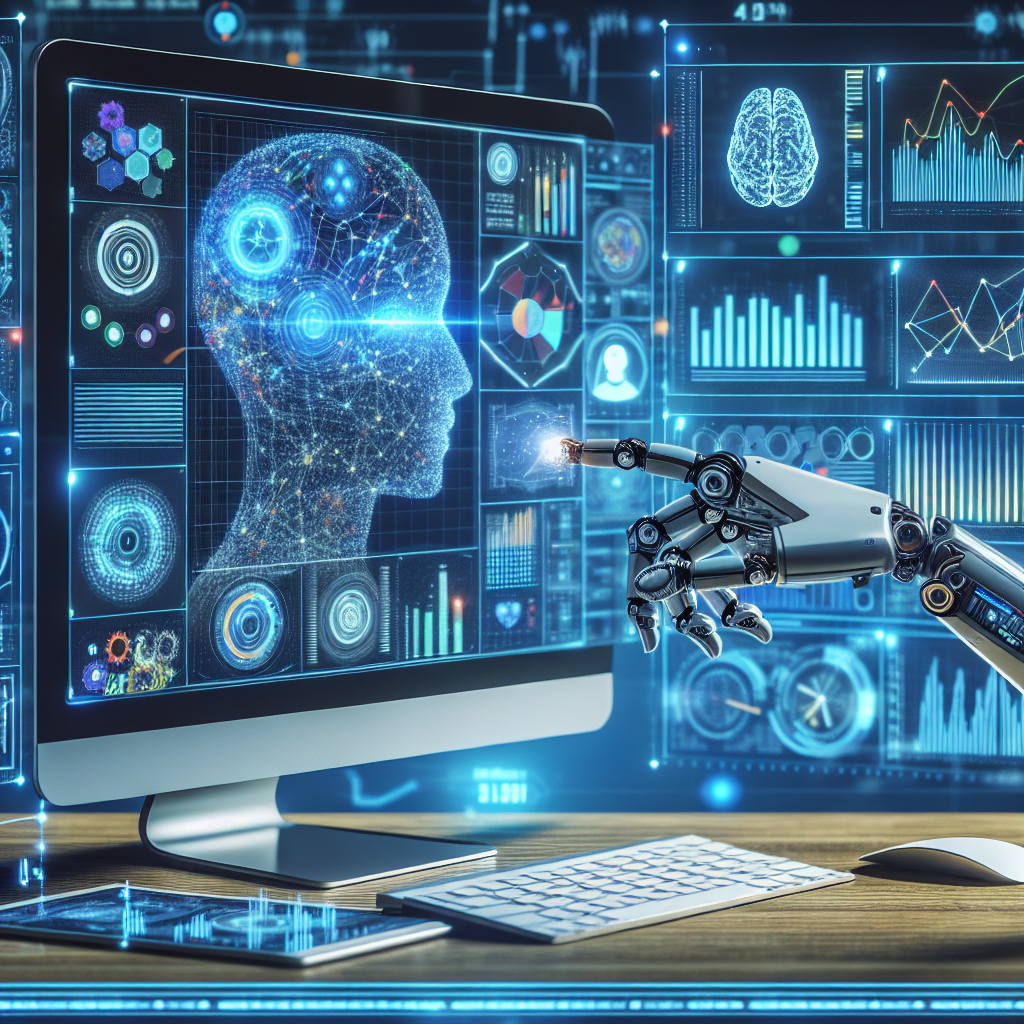Artificial intelligence (AI) has revolutionized the way businesses analyze data and make predictions. Predictive modeling, a process that uses data mining and probability to forecast outcomes, has long been a valuable tool for companies looking to make informed decisions. With advancements in AI technology, predictive modeling has become even more powerful and accurate. In this article, we will explore the future of AI solutions in predictive modeling and how they are shaping the way businesses operate.
AI Solutions in Predictive Modeling
AI solutions have the ability to process vast amounts of data quickly and efficiently, making them ideal for predictive modeling tasks. Traditional predictive modeling techniques often require manual data entry and analysis, which can be time-consuming and prone to errors. AI solutions, on the other hand, can automate many of these processes, allowing businesses to make faster and more accurate predictions.
One of the key benefits of using AI solutions in predictive modeling is their ability to handle complex and unstructured data. Traditional predictive modeling techniques are often limited to structured data sets, such as spreadsheets or databases. AI solutions, however, can analyze unstructured data sources, such as text documents or images, to uncover valuable insights that may have been previously overlooked.
Another advantage of AI solutions in predictive modeling is their ability to adapt and learn from new data. Traditional predictive models are static and require manual updates to stay relevant. AI solutions, on the other hand, can continuously learn from new data and adjust their predictions accordingly. This allows businesses to stay ahead of changing trends and make more accurate forecasts.
AI solutions can also help businesses overcome common challenges in predictive modeling, such as overfitting or underfitting. Overfitting occurs when a model is too complex and fits the training data too closely, leading to poor performance on new data. Underfitting, on the other hand, occurs when a model is too simple and fails to capture the underlying patterns in the data. AI solutions can automatically optimize model complexity to balance these competing concerns and produce more accurate predictions.
The Future of AI Solutions in Predictive Modeling
As AI technology continues to advance, the future of predictive modeling looks promising. Here are some key trends that are shaping the future of AI solutions in predictive modeling:
1. Increased Automation: AI solutions are becoming increasingly automated, allowing businesses to build and deploy predictive models with minimal human intervention. This automation can help businesses save time and resources, while also improving the accuracy of their predictions.
2. Enhanced Interpretability: One of the challenges of AI solutions in predictive modeling is their lack of interpretability. As AI models become more complex, it can be difficult to understand how they arrive at their predictions. Future advances in AI technology are focused on improving the interpretability of these models, making it easier for businesses to trust and act on their predictions.
3. Integration with Other Technologies: AI solutions are increasingly being integrated with other technologies, such as big data analytics and cloud computing. This integration allows businesses to leverage the power of AI in combination with other tools to create more powerful predictive models.
4. Real-Time Predictions: AI solutions are enabling businesses to make real-time predictions based on up-to-date data. This real-time capability can help businesses respond quickly to changing market conditions and make more informed decisions.
5. Personalized Predictions: AI solutions are also enabling businesses to create personalized predictions for individual customers or segments. By analyzing customer data and behavior, businesses can tailor their predictive models to better meet the needs of their target audience.
FAQs
Q: How accurate are AI solutions in predictive modeling?
A: AI solutions can be highly accurate in predictive modeling tasks, especially when trained on large and diverse data sets. However, the accuracy of AI models can vary depending on the quality of the data and the complexity of the problem being addressed.
Q: How can businesses use AI solutions in predictive modeling?
A: Businesses can use AI solutions in predictive modeling to forecast sales, optimize marketing campaigns, detect fraud, and make operational decisions. AI solutions can help businesses uncover valuable insights from their data and make more informed decisions.
Q: What are the challenges of using AI solutions in predictive modeling?
A: Some of the challenges of using AI solutions in predictive modeling include data quality issues, interpretability concerns, and ethical considerations. Businesses must carefully consider these challenges when implementing AI solutions in their predictive modeling processes.
Q: How can businesses ensure the ethical use of AI solutions in predictive modeling?
A: Businesses can ensure the ethical use of AI solutions in predictive modeling by being transparent about their data sources and modeling techniques, ensuring data privacy and security, and regularly monitoring and auditing their AI models for bias and fairness.
In conclusion, the future of AI solutions in predictive modeling looks bright, with advancements in technology enabling businesses to make more accurate and timely predictions. By leveraging the power of AI, businesses can uncover valuable insights from their data and make more informed decisions. As AI technology continues to evolve, businesses must stay ahead of the curve and embrace the potential of AI solutions in predictive modeling.

